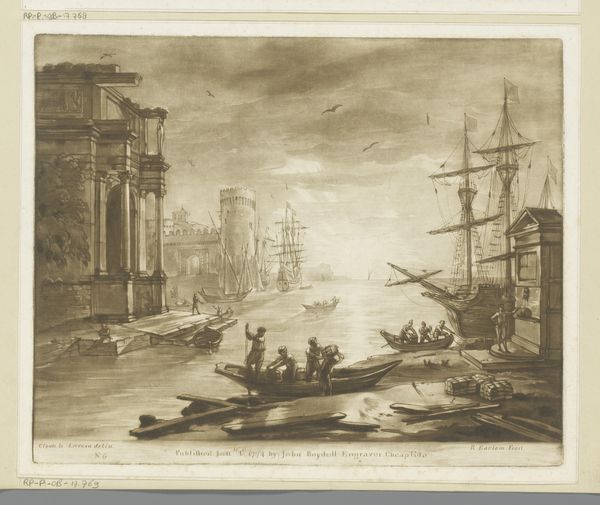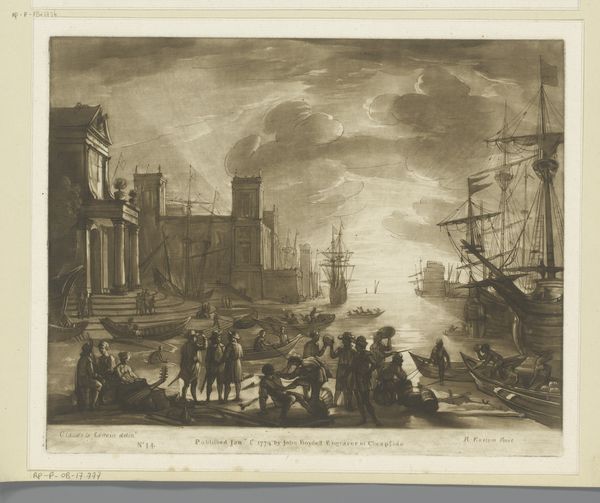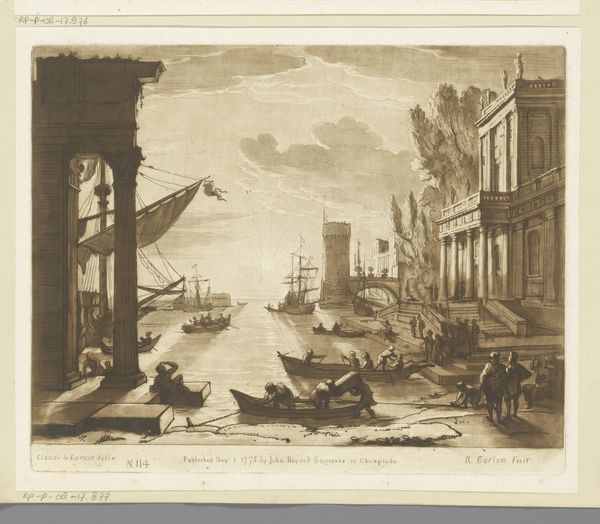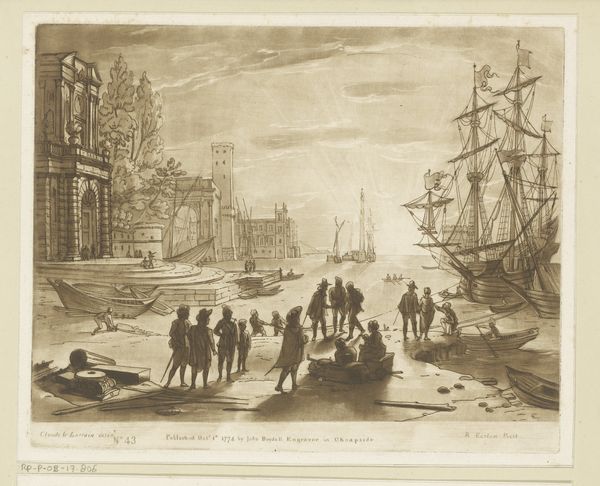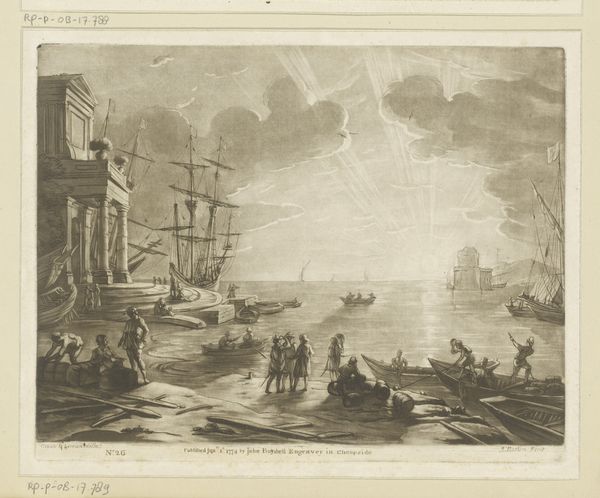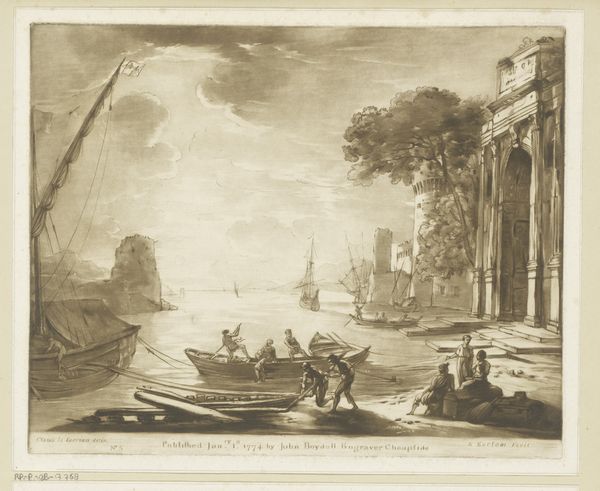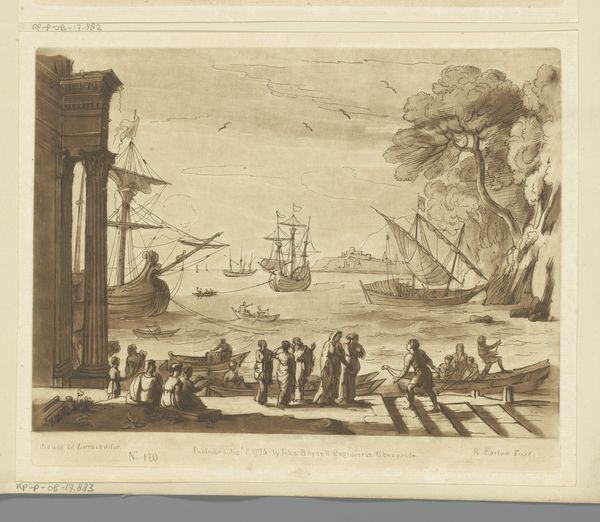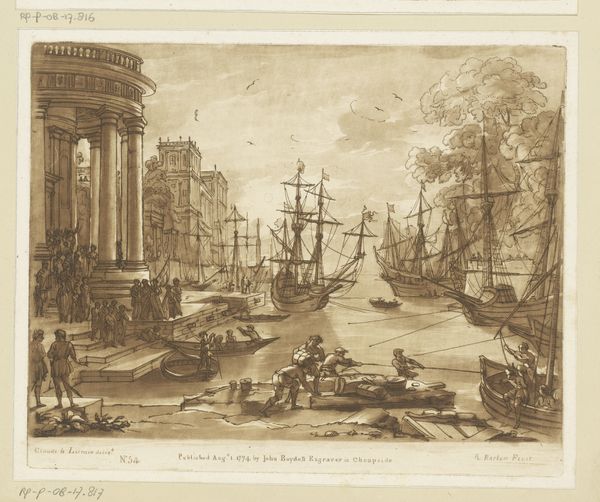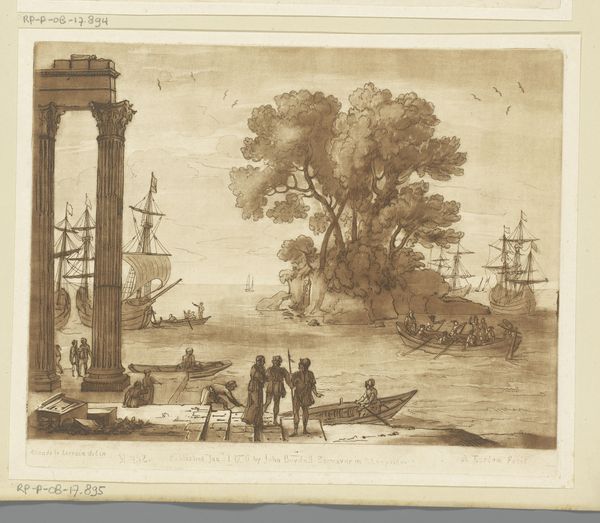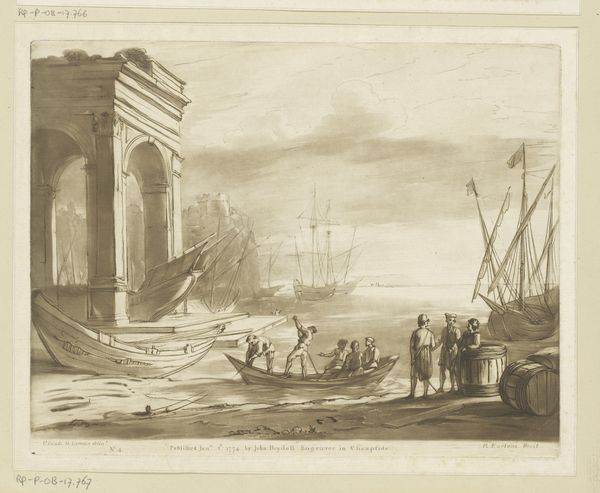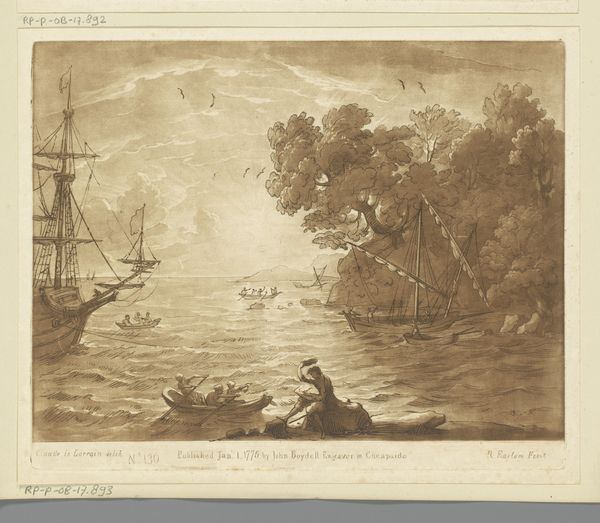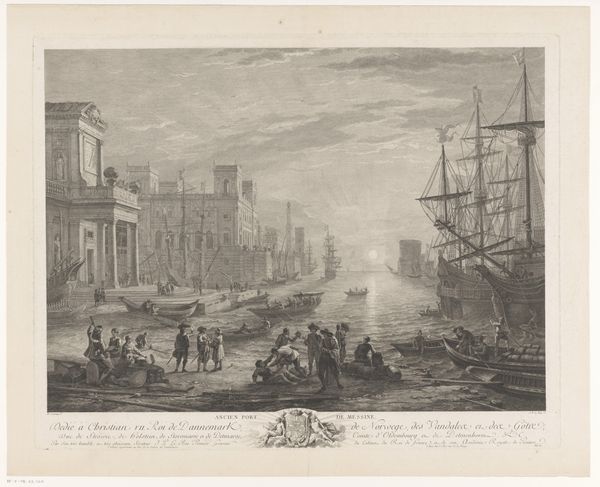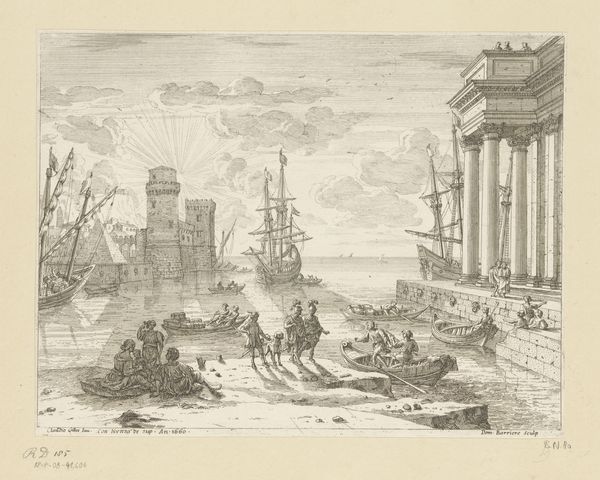
Zeehaven met het vertrek van Odysseus van het eiland van de Feniciërs Possibly 1775
0:00
0:00
print, engraving
# print
#
landscape
#
classical-realism
#
cityscape
#
history-painting
#
engraving
Dimensions: height 208 mm, width 258 mm
Copyright: Rijks Museum: Open Domain
Richard Earlom etched "Seaport with the Departure of Ulysses from the Land of the Phoenicians" around 1776. The scene is dominated by classical architecture, a grand portico, and maritime vessels, all suggesting a moment of transition and departure. The act of leaving, seen here in Ulysses's departure, resonates deeply with the human condition, mirroring our own existential journeys. We see it echoed in countless artworks throughout history: from ancient Egyptian funerary boats carrying souls to the afterlife, to 19th-century paintings of immigrants leaving their homelands. Consider, too, the repeated motif of ships setting sail found in vanitas paintings, a visual symbol of life's fleeting nature and our inevitable departure from this world. Here, the ships are vessels for both physical journeys and profound inner transformations. The sea, a boundary and a bridge, symbolizes the subconscious, a powerful force engaging viewers on a deep, emotional level. Just as the archetypes of Jung resurface in our collective unconscious, these visual symbols reappear, evolving and accruing new layers of meaning across different times.
Comments
No comments
Be the first to comment and join the conversation on the ultimate creative platform.
